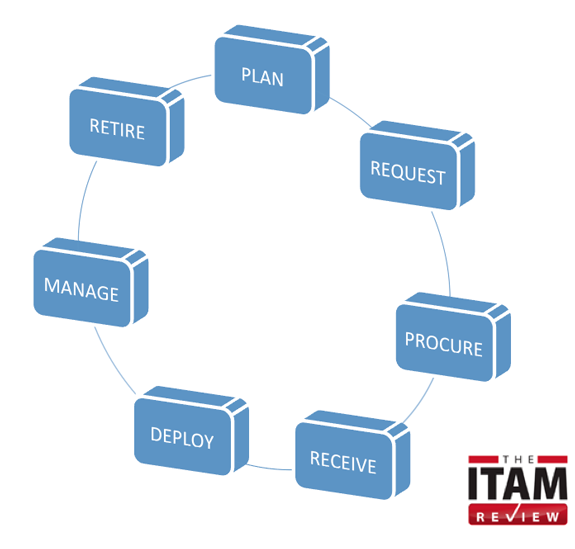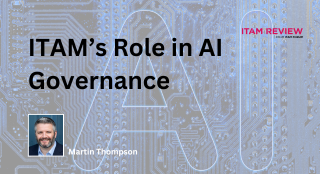Asset Repository Assessment Criteria
I will be reviewing Asset Repositories soon; the criteria below will shape our assessment of market leading Asset Repository vendors.
What is Asset Management?
Asset Management is a system for monitoring and managing things of value. Through the practice of Asset Management we can maximise the value of assets, minimize risks and underpin improved delivery of services.
Key benefits of Asset Management
- Increased productivity, performance and profitability
- Best possible service to customers
Key risks associated with Assets:
- Financial
- Contractual
- Legal or Compliance Risk
Asset Characteristics
- All assets follow a lifecycle of ownership
- All assets have some degree of emotional attachment
- A company may choose to manage assets when legislation dictates or when it is convenient or financially rewarding to do so
See more at: https://itassetmanagement.net/2013/08/09/asset-management/
Asset Management Systems
The aim of an Asset Management system is to track, control and quantify the financial value of IT assets from their introduction to the business to their removal.
There are three key feature areas for Asset Management systems:
- Lifecycle – keeping a log of everything we own and what changes are made to IT assets as they transition through the business from cradle to grave. The more we know about assets the easier they are to manage.
- Money – are we getting best value, are we utilising assets as efficiently as possible, how are we doing against budget?
- Governance – are we managing our contractual or regulatory requirements?

“Keeping a log of everything we own and what changes are made to IT assets as they transition through the business from cradle to grave. The more we know about assets the easier they are to manage.”
Key Feature Areas / Requirements
1. Lifecycle
Asset Discovery:
- How are assets entered into the system (Integration options, Discoverable vs. No Discoverable)
- Tagging of assets / Scanning / RFID etc.
- Managing different Asset Types and Ownership (Mobile, Corporate, BYOD/Third Party/Leased)
Service Management Processes:
- Support / underpin ITSM processes such as Incident and Problem, Change Management /IMAC (Install, Move, Add and Change), Request/Request Catalogue/ Service Level Management
- Overlap / interaction with CMDB
Lifecycle Stages:
- PLAN
- REQUEST
- PROCURE
- RECEIVE
- DEPLOY
- MANAGE
- RETIRE
2. Money
- Allow organizations to identify IT assets whose TCO/Service Management overhead outstrips business benefit of retaining them
- Reporting Asset book value / compliance status for mergers / acquisitions / financial planning
- Total Cost of Ownership / SLA performance / Vendor Management / Contract Negotiation
- Reporting / Decision Making
3. Governance
- Contracts Management / Prioritization
- Compliance Reporting / Remediation
- Asset Accuracy & Exception Reporting
Have I missed anything? Please leave a comment below or contact me to share your opinions.
If you are a Asset Repository system vendor and would like to participate, or you own a system and you’d like to see a comparison of your system against other leading vendors – please give me a shout. Thanks ~ Martin
Can’t find what you’re looking for?
More from ITAM News & Analysis
-
Broadcom vs Siemens AG - A Brewing Storm
The ongoing legal battle between VMware (under Broadcom ownership) and Siemens is yet another example of why ITAM goes far beyond license compliance and SAM. What might, at first glance, appear to be a licensing dispute, ... -
Shifting Left Together: Embedding ITAM into FinOps Culture
During one of the keynotes at the FinOps X conference in San Diego, JR Storment, Executive Director of the FinOps Foundation, interviewed a senior executive from Salesforce. They discussed the idea of combining the roles of ... -
Addressing the SaaS Data Gap in FinOps FOCUS 2.1
I recently reported on the FinOps Foundation’s inclusion of SaaS and Datacenter in its expanded Cloud+ scope. At that time, I highlighted concerns about getting the myriad SaaS companies to supply FOCUS-compliant billing data. A couple ...
Podcast
ITAM training
Similar Posts
-
The M&S Cyberattack: How IT Asset Management Can Make or Break Your Recovery
Marks & Spencer (M&S), the iconic UK retailer, recently became the latest high-profile victim of a devastating cyberattack. Fellow retailers The Co-Op and Harrods were also attacked. Recent reports suggest the rapid action at the Co-Op ... -
AI in ITAM: Insightful Signals from the Front Line
During our Wisdom Unplugged USA event in New York in March 2025, we engaged ITAM professionals with three targeted polling questions to uncover their current thinking on Artificial Intelligence—what concerns them, where they see opportunity, and ... -
How ISO/IEC 19770-1 Can Help Meet FFIEC Requirements
In the world of ITAM, the regulatory spotlight continues to intensify, especially for financial institutions facing increasing scrutiny from regulatory bodies due to the growing importance of IT in operational resilience, service delivery, and risk management. ... -
An Introduction to Scope 4 Emissions
Executive Summary For ITAM teams, sustainability is a core responsibility and opportunity. Managing hardware, software, and cloud resources now comes with the ability to track, reduce, and report carbon emissions. Understanding emission scopes—from direct operational emissions ...




